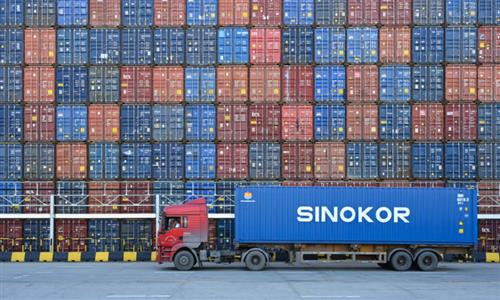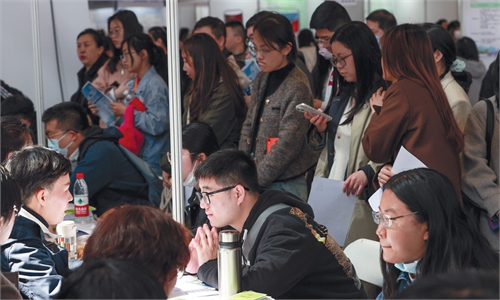Chinese textile industry's growing innovation capacity help unleash new opportunities in global market
Spinning, Weaving and Knitting

The opening ceremony of the 3rd China Chaoshan International Textile and Garment Exhibition (CTGE) is held in Shantou, South China's Guangdong Province on March 28, 2024. Photo: Courtesy of CTGE
A new wave of vigorous industrial transformation is picking up speed, as the global industrial chain has become increasingly reshaped, which is expected to bring new opportunities and challenges to China's textile industry.
Increasingly, Chinese textile enterprises are boosting their digital transition based on 5G, industrial internet and artificial intelligence (AI) innovations. The sector is also witnessing a higher level of consolidation in the country.
The Chaoshan region, east of Guangdong Province, South China, has taken a pioneer in the development of the textile industry in China and the world. Since the reform and opening-up drive was kicked off in late 1970s, Shantou city, Guangdong, has seen a very fast development of textile and garment industry. In 2023, the total output value of the city's textile and garment enterprises above the government's designated size reached 111.8 billion yuan ($15.73 billion).
At the three-day China Chaoshan International Textile and Garment Exhibition (CTGE), which closed in Shantou city on Saturday, a good number of textile companies showcased their new technologies and clothing materials as they strive to achieve a rapid upgrade in the textile industrial chain.
The technological innovation in clothing materials and changes in the industrial and supply chains have made the Chinese textile sector very competitive in the global market place, compared with other textile plants elsewhere. China's standing as a strong textile manufacturing power is unlikely to change.
Low-carbon innovation
Over recent years, Shantou city is speeding up industrial transformation and upgrade, introducing environment-friendly equipment and highly innovative technologies. By making use of 5G, AI and latest robotic technology, the city's traditional labor-intensive assembly lines are giving way to green, low-pollution, high-tech, and high-value manufacturing tools. As a result, innovation has injected rising impetus to accelerate the textile sector's growth.
The digitalization rate in Shantou's textile and garment industry has reached 55.6 percent, while nearly 75 percent of the equipment for raw material processing, weaving, dyeing and other procedures are becoming increasingly smarter, local government officials said during the CTGE.
Intelligent manufacturing has not only enhanced the city's production efficiency but also considerably contributed to the much-desired green transition.
Guangdong Rongchang Textile Industry Co told reporters that the company has deployed a set of digital control systems including Internet of Things (IoT) and enterprise resource planning, which enables the company to collect and analyze data through the whole production process, like energy consumption and quality control.
"New technologies help us curb the consumption cost in using raw materials and energy in manufacturing, while greatly improve recycling of wastes and achieve green and low-carbon manufacturing," the company said.
"China is not only the producer churning out goods, it is also a strong creator," Livia Stoianova, the founder of a famous French high-end brand On Aura Tout Vu, told Global Times at the CTGE on Thursday. Traditional industries like textile need to be revamped and improved, by leveraging new technology, she said.
In terms of scientific research and technological innovation levels, Chinese textile companies are deemed "very advanced" now, an industry insider told the Global Times on Sunday. The insider said that the textile industry will continue to develop high-quality smart fibers used not only for making clothing, but also for other emerging industries, like nano-fiber.
As an industry with a traditional comparative advantage in China, the textile sector covers multiple production steps including raw material manufacturing, spinning, weaving and knitting, and garment production. Today, China has the world's largest and most complicated textile system, with the country's manufacturing and international trade scale also leading the world, according to media reports.
Leading in fiber-making
In 2022, China's total fiber processing volume reached more than 60 million tons, accounting for some 50 percent of the world's fiber processing volume, data from the China National Textile and Apparel Council said.
Nevertheless, the US government has ramped up suppression of China's textile industry, like fabricating so-called "forced labor" narrative to stymie Chinese textile and apparel companies that use Xinjiang-grown cotton as raw materials.
And, a number of Western media outlets echoed their governments to hype the transfer of the industry and supply chain from China to other developing countries. Some even wrongly claimed that China had lost its comparative advantage in labor-intensive manufacturing, such as the textile industry.
"Although China has faced restrictive policies in the textile industry imposed by the West, we still keep attracting foreign investment, thanks to our active innovation, continuous opening-up and our technological advantages," Ma Qingxuan, vice president of Shantou Textile and Garment Industry Association, told the Global Times on Thursday.
"The US restricts Xinjiang-produced cotton, but China owns other advantages in textile materials such as nylon and polyester," Ma said.
Due to China's vast market opportunities in textile, the Guangdong exhibition has attracted many foreign executives and officials, who expressed their hope to accelerate cooperation with China.
On March 21, the Chinese mainland, ASEAN and Hong Kong signed a memorandum of understanding on regional cooperation in textile manufacturing, which will contribute to the development of new quality productive forces and in-depth industrial cooperation along the Belt and Road Initiative (BRI), according to a statement on the website of the China National Textile and Apparel Council.
"As far as the textile manufacturing is concerned, China still has more competitive advantages in terms of production cost," Oranuch Wannapinyo, commercial consul at the Commercial Section Royal Thai Consulate-General, told the Global Times on Thursday at the CTGE.
"China can produce on a larger scale. Thailand often places large orders for Chinese textile companies, and also orders raw materials from China to produce domestically in the form of original equipment manufacturing," she said.
In addition, Thailand and China have been closely cooperating in the textile field, including holding seminars and lectures, as well as exchanging and sharing resources under the framework of the BRI, Wannapinyo said.



